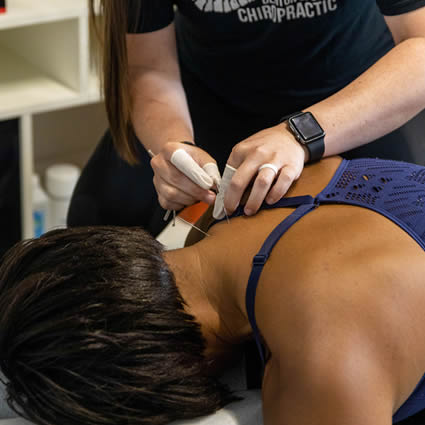 Are you dealing with tension headaches, chronic pain, or sports injuries? Looking for a drug-free solution that gets great results? If so, you may benefit from dry needling, an alternative therapeutic practice that can help reduce inflammation and ease pain.
Are you dealing with tension headaches, chronic pain, or sports injuries? Looking for a drug-free solution that gets great results? If so, you may benefit from dry needling, an alternative therapeutic practice that can help reduce inflammation and ease pain.
This type of therapy involves inserting thin needles into trigger points in the muscles and tissue to help soothe and relieve tension, alleviate joint pain, and reduce soreness. These can all improve range of motion and pain-free movement.
What Are Some Benefits?
Dry needling relaxes the muscles, reduces local and referred pain, improves blood flow and oxygen circulation, reduces inflammation, and speeds up the body’s natural healing processes, including nerve communication. It also triggers your body’s ability to release natural pain relievers to decrease the perception of pain.
What Conditions Can It Address?
Needling can eliminate or reduce the symptoms of headaches and migraines by relaxing the muscles in the head and neck. It is frequently used for treating many other conditions, such as:
- Tennis and golfer’s elbow (lateral and medial epicondylitis)
- Achilles tendinitis
- Plantar fasciitis
- Sciatica
- Neck and low back pain
- Carpal tunnel syndrome
- Hamstring tendinopathy
- Rotator cuff pain
- Different kinds of strains and sprains
What to Expect
If you’re concerned about the size of the needles being used, rest assured. The needles used in dry needling are the same ones used for acupuncture. Acupuncture needles are up to 10 times smaller than the hypodermic needles used for injections.
During dry needling, patients may experience achiness, soreness, twitching, pressure, and minor discomfort. Some patients report feeling improvements after a single session, though chronic problems usually take a few visits.
Frequently Asked Questions
How is dry needling different from acupuncture?
Schedule an Appointment
Wondering if you can benefit from dry needling? Contact us today to schedule an appointment!
CONTACT US »
